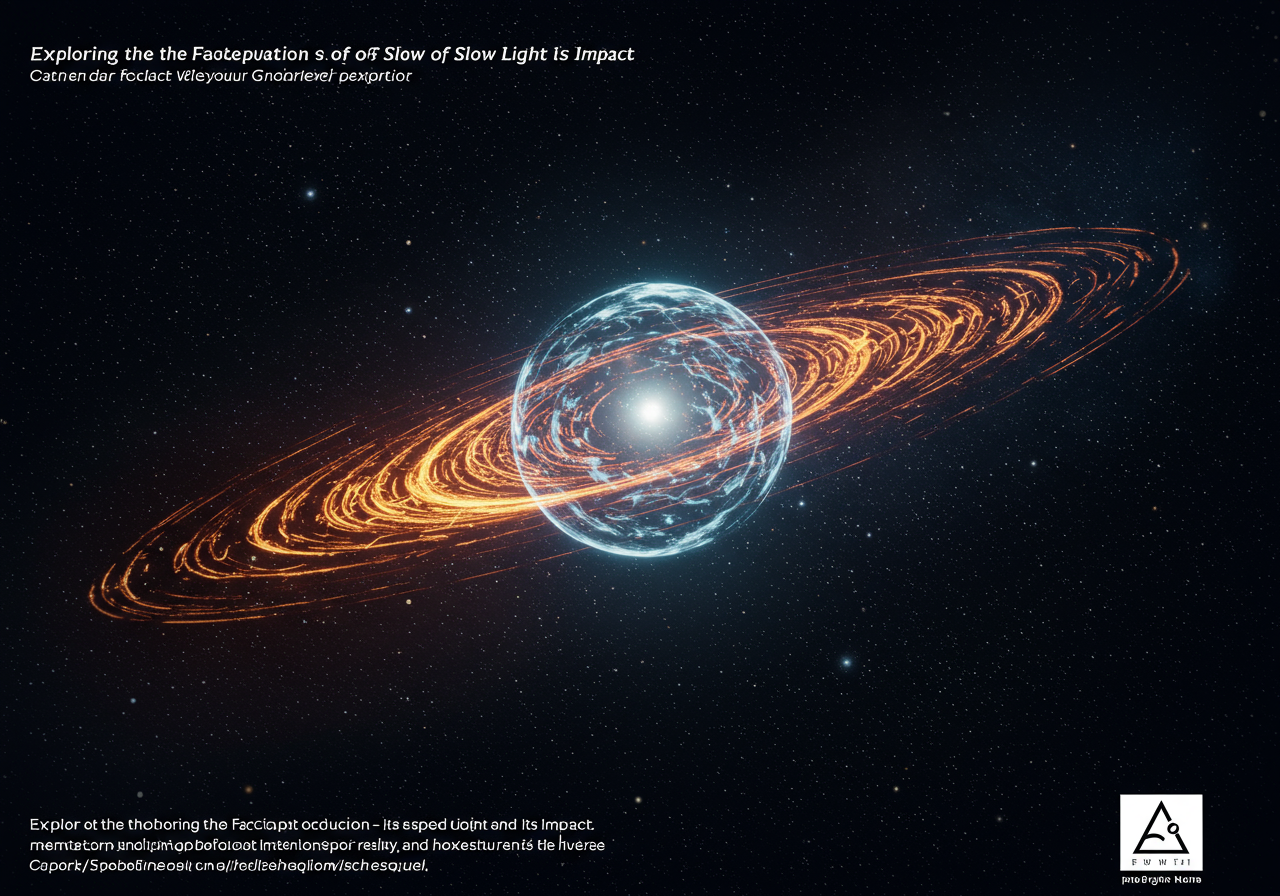Have you ever taken a moment under the expansive night sky, marveling at the constant rush of light—clocking in at a staggering 186,282 miles per second? Now try to wrap your mind around slowing this zippy traveler, taking it from a blur to something closer to a stroll, and contemplate the novel insights this ‘slow light’ brings. Instead of just another physics puzzle, exploring this phenomenon could shift how we understand the behavior of the universe and the way we perceive reality.
Consider this: You’re at a cosmic race where light holds the crown for speed, blitzing through the vacuum of space with ease. But as soon as it enters another medium, like glass or water, it’s as if the terrain changes. Particles become hurdles—restraining its pace to a remarkable degree. The concept of slow light emerges from these interactions, prompting us to rethink our assumptions about speed and time.
So, what fascinating mechanics are at play? Think of a room filled with mismatched dancers. On cue, they begin moving in synchronicity—the chaos becomes choreography. In light’s realm, this coherence allows photons to move harmoniously, shifting them from a chaotic dash to an organized glide—a transformation that alters their speed noticeably.
From here, slow light opens doors to practical uses that stretch beyond academic musings. In telecommunications, fine-tuning the travel speed of light enhances data flow in fiber optics, potentially making our information networks smarter and quicker. Imagine data in ‘slow traffic,’ more orderly as it traverses digital highways, revolutionizing connectivity in bustling smart cities.
Art and technology also find fresh vistas with slow light. Imagine art installations where light lingers, creating immersive visual experiences or, in medicine, where controlling light speed might refine imaging technologies, giving way to clearer, more precise diagnostics.
But slow light doesn’t just stop at practical applications—it draws us into deeper contemplation. If manipulating such a fundamental element is achievable, what other constants might be explored? Our ability to adjust light’s speed makes us question our own perceptions—is our universe a predetermined sequence, or do we have more control than we realize?
Moreover, this phenomenon nudges the frontier of quantum computing. Slowing photons could lead to developing stable qubits, pushing technical boundaries into realms once reserved for fiction. Here, science meets imagination, and by experimenting with light, we venture into understanding intricate quantum behaviors.
As you ponder slow light, think of yourself not merely as an onlooker but as an active participant in unearthing these cosmic curiosities. The slowing of light challenges us to reconsider everything we hold as steady, to see if we might indeed be more than just passengers in this universe.
In sum, slow light offers more than a glimpse into physics—it beckons us to probe into the vast complexities around us. Whether advancing technologies or diving into deeper existential queries, the exploration of slow light reshapes our connection with the cosmos. For more journeys between science and the essence of consciousness, Firebringer AI welcomes you into the conversation.
Discover more at https://firebringerai.com.




